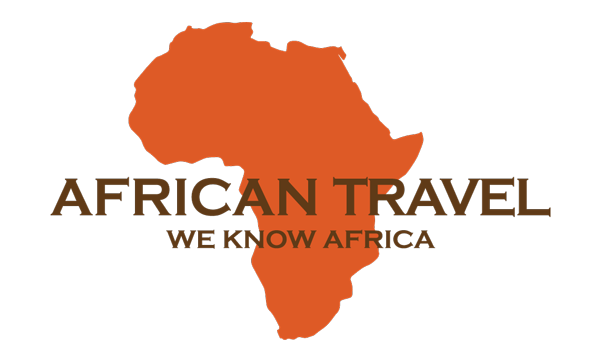Gorilla Trekking in Rwanda
An Unforgettable Experience
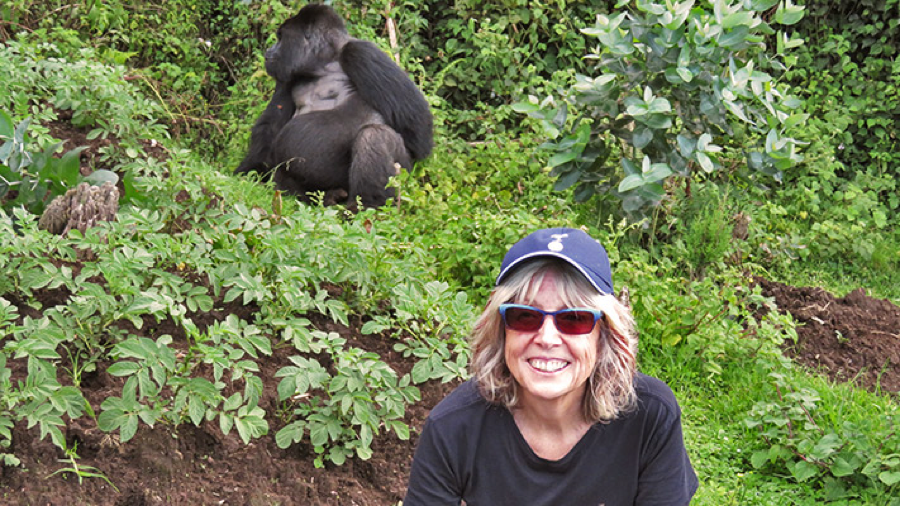
On my most recent trip to Africa, I realized one of my dreams: trekking with the mountain gorillas of Rwanda. These gentle creatures are stunning to behold and I feel privileged to have seen them in their natural habitat. As an experienced African traveler, I am no stranger to the majesty of Africa: from the spectacular Victoria Falls to the extraordinary animals such as elephants, lions, leopards and more, Africa is truly a destination of wonders. Even those incredible experiences, however, did not prepare me for my time with the mountain gorillas of Rwanda, a magical experience I am delighted to share with you now.
Prepping for the Gorilla Trek
The morning of our trek, we met our guide, Bosco, who would be leading us through the wilderness of Volcanoes National Park to meet our family of gorillas. Before we left, Bosco talked about the importance of our trek to the sustainability of the species. Mountain gorillas are critically endangered: researchers estimate that as few as 880 remain in the wilds of Africa. To ensure that the population of these beautiful creatures continues to thrive, the Rwandan government strictly limits the amount of Gorilla interactions available for tourists—only 80 gorilla trek permits are available per day in the country. This approach has two major benefits: the funds from the limited permits go directly to gorilla conservation initiatives and the small number of permits minimizes the human impact on the gorillas themselves. Additionally, the Rwandan government reimburses farmers and property owners whose trees are damaged or destroyed by the mountain gorillas, ensuring that the gorillas can roam freely without conflict.
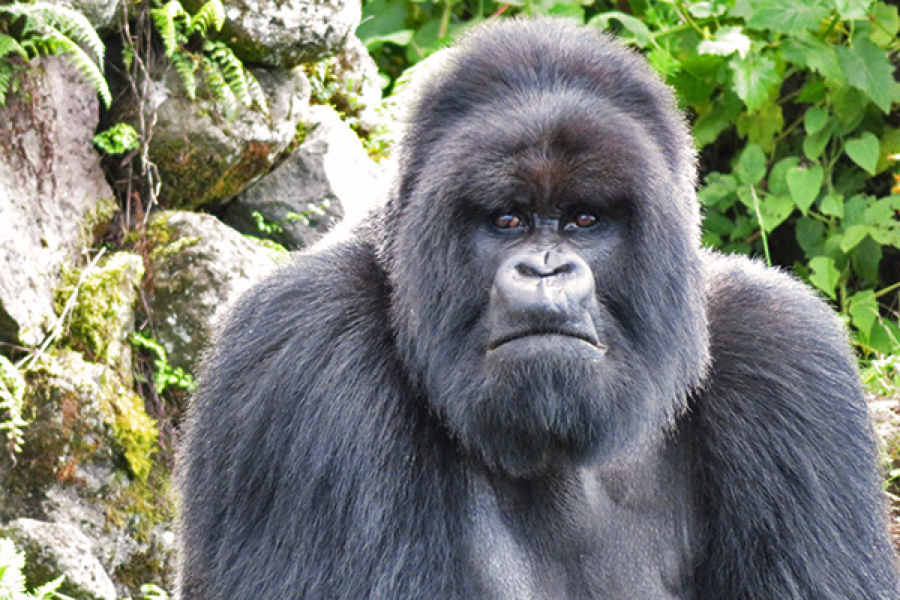
Bosco introduced us to the “Hirwa” gorilla clan, the family we would be meeting. The family is so named because “Hirwa” means lucky, which refers to the family’s good fortune: they have grown to a clan of 20 members, including a pair of juvenile twins—a rare occurrence in the wild.
We were also given basic rules for how to approach the family: avoid eye contact, stay alert, be quiet, disable flash on our cameras and keep our distance from the family. Bosco emphasized that our goal, beyond observing this amazing species, was to interrupt the Hirwa family as little as possible.
Meeting the Gorillas
It didn’t take long for us make contact with the gorillas. We hiked for about 30 minutes before Bosco told us that the clan was just ahead, outside a farmer’s field. There was a palpable excitement in the air as I, and others in our group, readied our cameras in anticipation of what we were about to see. As we reached the top of the field, we caught our first glimpse of the clan: they were busily munching on bamboo trees.

The duration of their lunch was clear thanks to the trail of gnawed bamboo trees. The Hirwa family included a silverback, adult females and a few babies. The adorable babies were on full display: playing with mom, frolicking in the bushes and even beating their chests in a adorable impression of their silverback father. My favourite gorilla baby, however, tried his hardest to feed on a bamboo tree all by himself. The tree was just a little too thick!
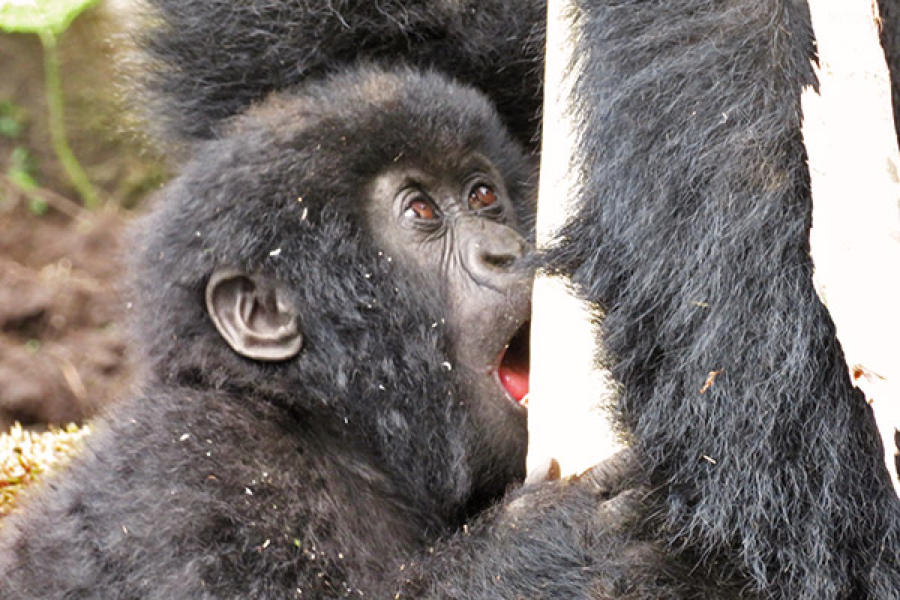
The size of the adult members of the Hirwa family astonished me. Male silverbacks, the largest members in a family, can weigh up to 480 pounds and the silverback of the Hirwa family was massive! As the other members of the family were busy eating and playing, he mostly sat alone in the background, quietly watching over his family. At one point, while I was watching some of the other gorillas, the silverback approached me—it appeared that I was between him and where he wanted to go. I looked to Bosco who told me to stay calm and let the large silverback walk by, and that’s exactly what he did: the silverback brushed by my leg on his way to munch on some bamboo shoots.
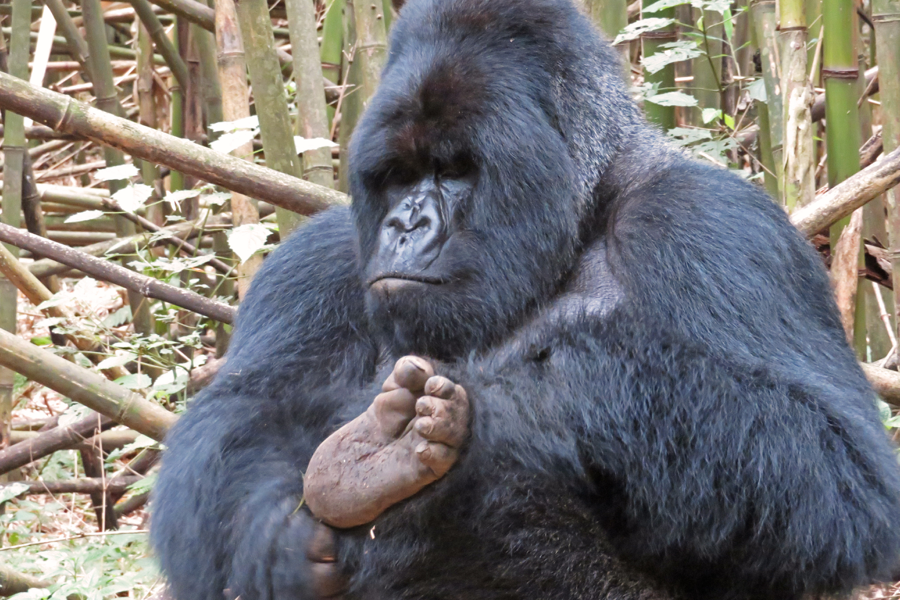
During my time with the gorillas, I could not get over their likeness to humans. With no border or fence between us, watching them felt in some ways like looking into a mirror. Gorillas share 98 percent of their DNA with humans, and the evidence was right in front of me as I closely observed their all too familiar gestures, mannerisms and behaviours.

Dian Fossey, author of Gorillas in the Mist and the famous mountain gorilla researcher, once remarked, “when you realize the value of all life, you dwell less on what is past and concentrate on the preservation of the future.” I could not have said it better myself! My experience with the gorillas reinforced my feelings that conserving these creatures for future generations is a crucial mission, one that benefits us all. If you are considering visiting Rwanda to see the mountain gorillas, I absolutely recommend it. The experience was unforgettable and I will always cherish my time with the Hirwa family.
View our Ultimate Rwanda itinerary to learn more about the gorilla trekking experience.
